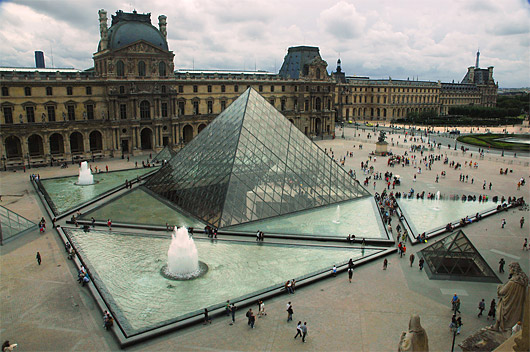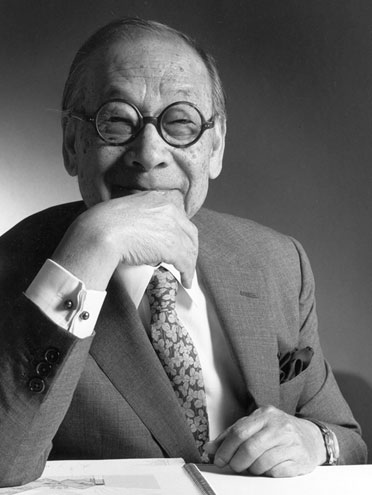Very few modern landmarks have the kind of instant recall as The Louvre Pyramid, designed by Leoh Ming Pei. It even featured in the Dan Brown bestseller The Da Vinci Code and the cinematic version celebrated the angular mystery of the structure.
**
It is a radical departure from its historic context and had attracted a lot of criticism but you cannot deny that the structure grows upon you if only because it is so unpredictable and edgy. But then you would expect nothing less from Pei (born April 26, 1917), famously known as I. M. Pei. As a Chinese American architect, he has already smashed a few preconceptions about identity and his work constantly pushes boundaries as well.
He has been credited among other things with redefining contemporary architecture. He has gleaned inspiration and learning from every aesthetic context he has been exposed to. From Shanghai’s international architecture to the classical Chinese gardens of Suzhou,the University of Pennsylvania’s architecture school, the Massachusetts Institute of Technology, the Harvard Graduate School of Design, the works of other architects like Le Corbusier and Frank Lloyd Wright he researched as a student.
**
Another influence was his wife Eileen Loo to whom he has been married for over 70 years. He founded an independent design firm in 1955 and after decades of work, is retired now. His work however stays relevant. Some of his famous projects being the Green Building at MIT, the National Center for Atmospheric Research in Colorado; the Dallas City Hall and the East Building of the National Gallery of Art, a skyscraper in Hong Kong for the Bank of China, the Morton H. Meyerson Symphony Center in Dallas, the Miho Museum in Japan, the Suzhou Museum in Suzhou, and the Museum of Islamic Art in Qatar.
**
Very little is known about the time he spent working on incendiary bombs at the National Defense Research Committee and the fact that a man who was trained to build also spent time learning to destroy is both disturbing and indicative of how many perspectives Pei has worked with. The multiple perspectives towards life and architecture have translated themselves in his most famous creation, the pyramid at the Louvre. In 1981, François Mitterrand, the President of France proposed the renovation of the Louvre Museum. Pei became the first foreign architect to work on the Louvre and central to the design was a glass and steel pyramid as it reflected the faceted planes of the museum’s roofs. The response to the idea was largely negative and it was questioned why a Chinese American had been entrusted with the sacred spaces of French history.
**
To win public support, a full-sized cable model of the pyramid was placed in the courtyard and over 60,000 people visited it and the negativity eased a bit. Pei was once quoted, “The pyramid was a very controversial subject, back in 1984-85, as people tend to confuse the form of the pyramid of the Louvre with that in Egypt. I think it is not accurate: the Egyptian pyramid is huge, it is made of solid stone,and it is a place for the dead. The pyramid at the Louvre is the opposite: it is made of glass, it is transparent, and it is for the living. ”
**
The new Louvre courtyard was opened on October 14, 1988 and today the cynics have dwindled to almost nothing. The cubist structure is today one of the most distinct images in the world. Pei himself is now recognised as someone who harmoniously combines Eastern and Western influences, and focuses on the context and purpose of a structure and then builds with classical discipline and modern perspectives. His name Leoh Ming stands for, “to inscribe brightly” and he has inscribed his name on the world map with over 50 landmarks and has won every possible honour in his field including the Pritzker Prize, the Nobel Prize of architecture.
**
Beyond the debate about style and architectural merit, the most important question for Pei has been, “how does my building affect life?” Because for him life and architecture are two sides of the same human story.
**
The story was earlier carried in the New Indian Express, Chennai







